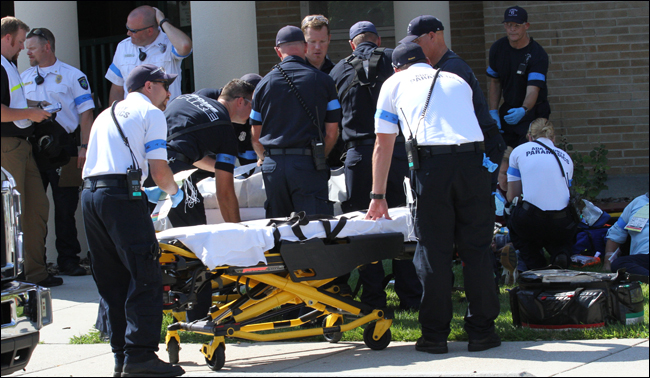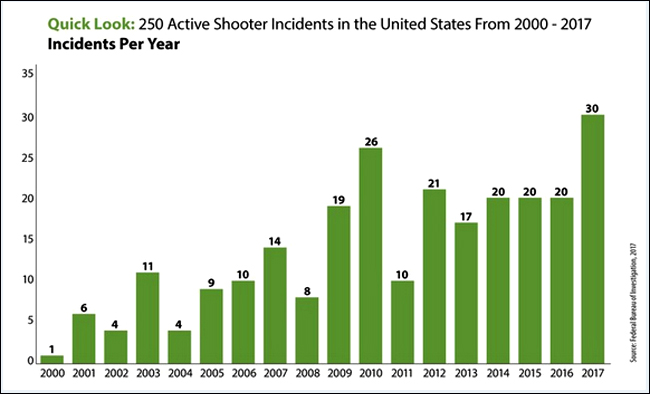

Photo courtesy IOEM
Assailant: Three Minutes
Average police response time is three minutes, so we must find a way to deal with an active-shooter situation until help arrives
![]()
Heavy combat boots thunder down the school corridor, and although I know it is only a simulation, it feels real. The anguished scream of victims sounds real. The intense focus of police – that feels real. The speed of the action is the only big difference – the police are taking the time to get it right and provide a great learning opportunity. An actual event would be frenetic and chaotic, with no time to stop and think about it. But that’s one of the benefits of this type of training – the more often it is practiced, the better the reactions are drilled into the participants, to the point where it can almost be done automatically.
Watch video.

ITD and the Idaho Office of Emergency Management (IOEM) sponsored an emergency preparedness exercise Wednesday (July 18) at Borah High School. The event, put on by I-STEP (Intermodal Security Training and Exercise Program), provided a unique training opportunity for the Boise Police Department, Boise Fire Department and Ada County Paramedics, all of which were responders at the simulation.
Whether we like it or not, or are even ready to deal with it, the threat is real, too, and growing.
From 2000-2008, there was an average of 7.4 active active shooter-type incidents per year, where an assailant has or is in the process of killing three or more people in a populated area – a school shooting, a business, or a mall.
That yearly average nearly tripled from 2009-2016, to 20.3. See bar chart below
From Columbine in 1998, to Sandy Hook in 2012, to the recent stabbing in Boise a few weeks ago, senseless violence has become an unwelcomed visitor at the door. But panic does not need to be your default reaction.
“The training exercise was about taking ownership of your own safety and preparedness,” explained ITD Emergency Management Planner Neal Murphy. “An assailant is actively trying to cause damage. We should each be actively trying to prevent or minimize it.”
“If you know what to look for, you have a much better chance of avoiding that event altogether. And if the end result is that employees take this back to their work unit, review their procedures and start the conversation with co-workers, that’s a win.”
It was helpful on many levels, according to Elizabeth Duncan, spokesperson for IOEM. “Aside from the critical training and exercise component for an active assailant event, it was also a great opportunity to work collaboratively with ITD, TSA, the city of Boise and the Boise School District to inform the public of what was taking place.”
“We train and exercise for earthquakes, mass power outages, etc. This is another scenario. We want to focus on the importance of training and exercise for all occurrences."

Published 07-20-18